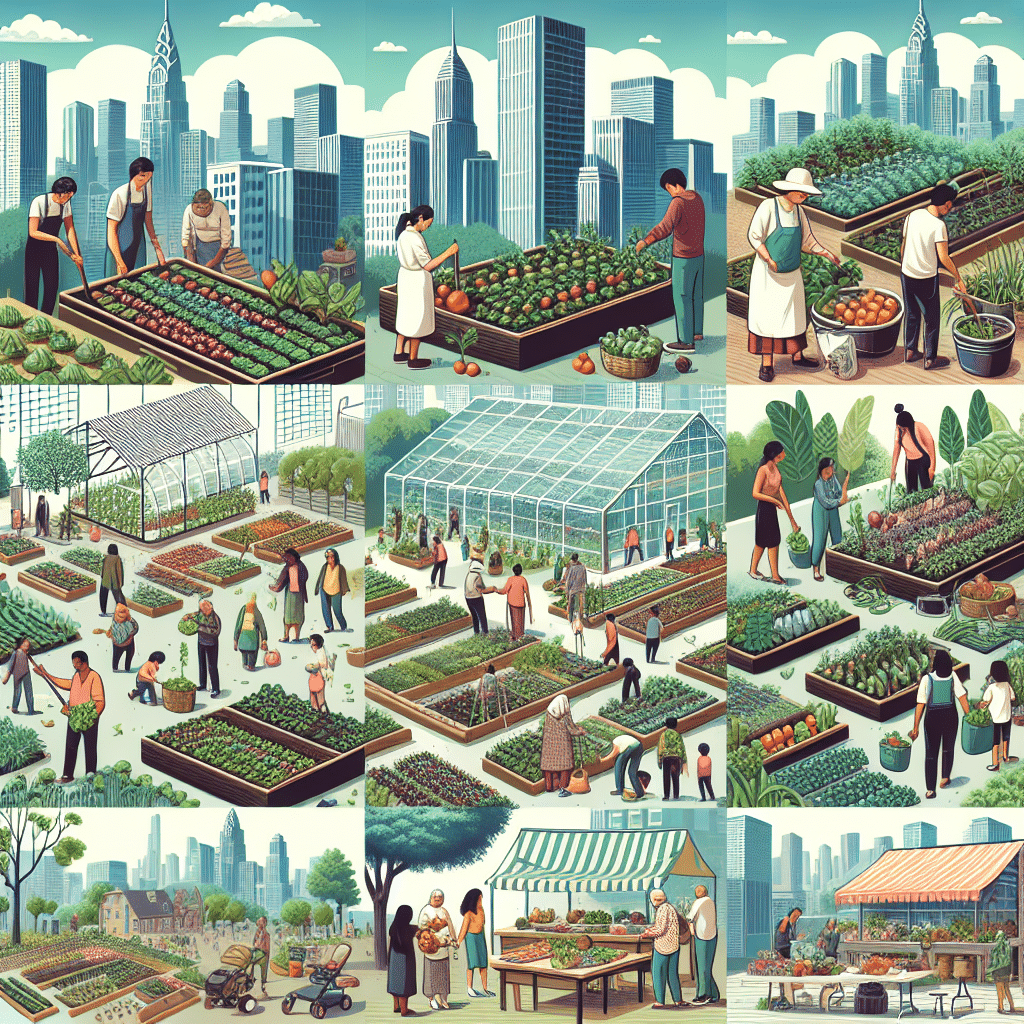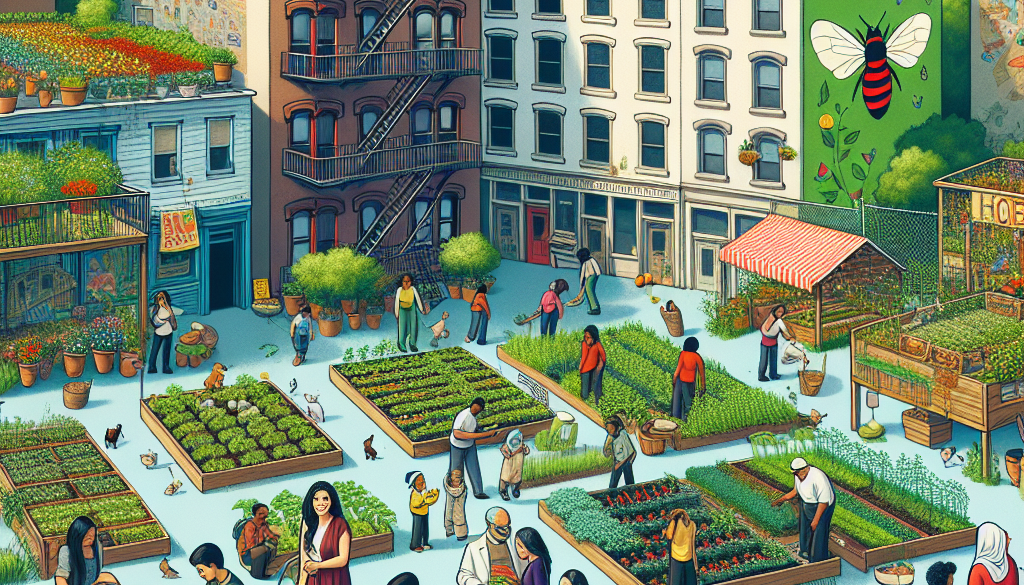Programs for community agriculture & urban food hubs
-
Table of Contents
- Community Agriculture & Urban Food Hubs: Paving the Way for Sustainable Cities
- The Rise of Urban Agriculture
- Benefits of Urban Agriculture
- Community Agriculture Programs
- Examples of Successful Community Agriculture Programs
- Urban Food Hubs
- Key Components of Urban Food Hubs
- Impact of Urban Food Hubs
- Challenges and Solutions in Urban Agriculture
- Innovative Urban Agriculture Practices
- Statistics Supporting Urban Agriculture Growth
- Conclusion: The Future of Urban Food Systems
- ETprotein: Enhancing Urban Agriculture with Quality Protein Products
Community Agriculture & Urban Food Hubs: Paving the Way for Sustainable Cities

As urban populations continue to grow, the need for sustainable food systems becomes increasingly critical. Community agriculture and urban food hubs have emerged as innovative solutions to address this challenge, providing fresh, locally-sourced produce to city dwellers while also offering social, economic, and environmental benefits. This article delves into the programs that are transforming urban landscapes into thriving foodscapes.
The Rise of Urban Agriculture
Urban agriculture refers to the practice of cultivating, processing, and distributing food in or around urban areas. This movement has gained momentum as a response to the growing concern over food security, the environmental impact of traditional agriculture, and the desire for community engagement. Urban agriculture takes many forms, including community gardens, rooftop farms, and indoor vertical farming operations.
Benefits of Urban Agriculture
- Enhances food security by providing access to fresh produce
- Reduces the carbon footprint associated with food transportation
- Creates green spaces that improve air quality and biodiversity
- Strengthens community bonds and provides educational opportunities
Community Agriculture Programs
Community agriculture programs are initiatives that encourage the collaborative effort of growing food within a community. These programs often involve shared garden spaces where members can learn about sustainable farming practices and enjoy the fruits of their labor.
Examples of Successful Community Agriculture Programs
- Urban Farming Education (UFE): UFE offers workshops and resources for urban residents to learn about sustainable agriculture.
- Community Supported Agriculture (CSA): CSA programs allow residents to subscribe to the harvest of a local farm, receiving regular shares of produce.
- GreenThumb: Located in New York City, GreenThumb supports over 550 community gardens with resources and education.
Urban Food Hubs
Urban food hubs are centralized locations that facilitate the storage, processing, and distribution of locally grown food. These hubs serve as a vital link between urban farmers and consumers, ensuring that fresh produce reaches city markets efficiently.
Key Components of Urban Food Hubs
- Production: Space for growing food, such as greenhouses or community gardens
- Aggregation: Facilities for collecting and sorting produce from multiple growers
- Processing: Equipment and space for preparing and packaging food items
- Distribution: Systems for delivering food to markets, restaurants, and consumers
Impact of Urban Food Hubs
Urban food hubs not only provide fresh produce but also stimulate local economies by creating jobs and supporting small-scale farmers. They can also serve as educational centers, teaching urban residents about nutrition and sustainable food systems.
Challenges and Solutions in Urban Agriculture
Despite the benefits, urban agriculture faces several challenges, including limited space, soil contamination, and regulatory hurdles. Innovative solutions such as hydroponics, aquaponics, and policy reforms are helping to overcome these obstacles.
Innovative Urban Agriculture Practices
- Hydroponics: Growing plants in a nutrient-rich water solution, without soil
- Aquaponics: Combining fish farming with hydroponics in a symbiotic system
- Policy Reforms: Advocating for zoning changes and urban agriculture incentives
Statistics Supporting Urban Agriculture Growth
According to the Food and Agriculture Organization of the United Nations (FAO), urban agriculture is practiced by 800 million people worldwide, contributing to food security and nutrition. In the United States, the USDA reports that local food sales, including those from urban farms, have surged to $11.7 billion in 2014 from $5 billion in 2008.
Conclusion: The Future of Urban Food Systems
Community agriculture and urban food hubs are not just trends; they are essential components of a sustainable future. By supporting these programs, cities can become more resilient, self-sufficient, and environmentally conscious. The integration of technology and innovative farming practices will continue to play a significant role in the evolution of urban food systems.
ETprotein: Enhancing Urban Agriculture with Quality Protein Products
As urban agriculture flourishes, the demand for high-quality, plant-based protein sources is on the rise. ETprotein is at the forefront of meeting this demand, offering a range of organic bulk vegan proteins that are perfect for health-conscious urbanites. Their products, including rice protein, pea protein, and various seed proteins, are non-GMO, allergen-free, and boast a neutral taste, making them ideal for a variety of applications in the urban food landscape.
Whether you’re an urban farmer looking to enrich your produce with plant-based proteins or a city dweller seeking nutritious supplements, ETprotein’s offerings can enhance your diet and support your sustainable lifestyle. For more information or to sample their products, reach out to ETprotein and contribute to the growth of healthy, sustainable urban communities.
About ETprotein:
ETprotein, a reputable protein and L-(+)-Ergothioneine (EGT) Chinese factory manufacturer and supplier, is renowned for producing, stocking, exporting, and delivering the highest quality organic bulk vegan proteins and L-(+)-Ergothioneine. They include Organic rice protein, clear rice protein, pea protein, clear pea protein, watermelon seed protein, pumpkin seed protein, sunflower seed protein, mung bean protein, peanut protein, and L-(+)-Ergothioneine EGT Pharmaceutical grade, L-(+)-Ergothioneine EGT food grade, L-(+)-Ergothioneine EGT cosmetic grade, L-(+)-Ergothioneine EGT reference grade and L-(+)-Ergothioneine EGT standard. Their offerings, characterized by a neutral taste, non-GMO, allergen-free attributes, with L-(+)-Ergothioneine purity over 98%, 99%, cater to a diverse range of industries. They serve nutraceutical, pharmaceutical, cosmeceutical, veterinary, as well as food and beverage finished product distributors, traders, and manufacturers across Europe, USA, Canada, Australia, Thailand, Japan, Korea, Brazil, and Chile, among others.
ETprotein specialization includes exporting and delivering tailor-made protein powder and finished nutritional supplements. Their extensive product range covers sectors like Food and Beverage, Sports Nutrition, Weight Management, Dietary Supplements, Health and Wellness Products, and Infant Formula, ensuring comprehensive solutions to meet all your protein needs.
As a trusted company by leading global food and beverage brands and Fortune 500 companies, ETprotein reinforces China’s reputation in the global arena. For more information or to sample their products, please contact them and email sales(at)ETprotein.com today.












